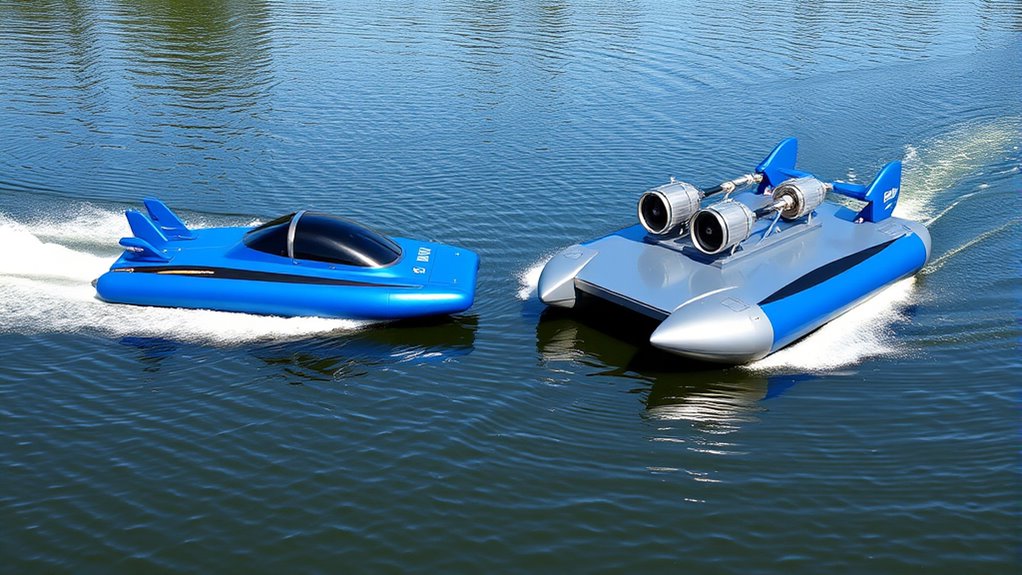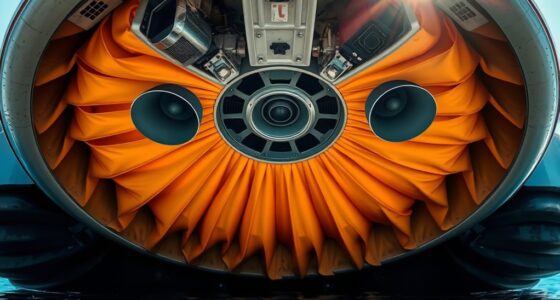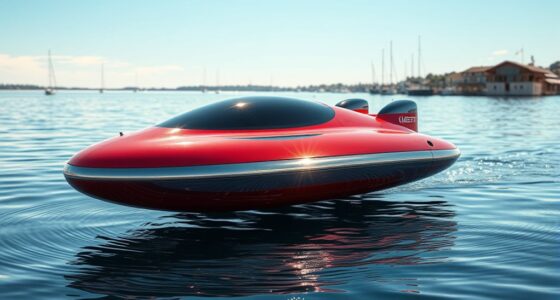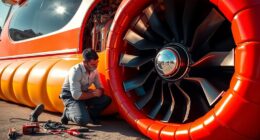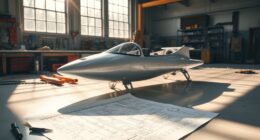When comparing hovercraft types, you’ll find that single-engine models are simpler and more cost-effective, ideal for beginners. However, they provide less performance and safety, especially under heavy loads. On the other hand, twin-engine designs offer enhanced efficiency, speed, and safety due to their redundancy. While they can be pricier and require more maintenance, their reliability makes them suitable for commercial and rescue operations. Explore the key differences to determine which type best meets your needs.
Key Takeaways
- Single-engine hovercraft are simpler and more affordable, making them ideal for beginners or those prioritizing low maintenance costs.
- Twin-engine hovercraft offer better performance and efficiency, especially under heavy loads and challenging conditions.
- Safety is enhanced in twin-engine designs due to redundancy; if one engine fails, the other can maintain operation.
- Maintenance for single-engine hovercraft is generally easier and less costly, while twin-engine models require more resources and expertise.
- Choosing between designs depends on specific operational needs, including safety, performance, and maintenance capacity.

When you’re exploring the world of hovercraft, understanding the differences between single and twin-engine designs can considerably impact your choice. Each design comes with its own set of benefits and drawbacks, especially when it comes to engine efficiency and maintenance complexity. You’ll want to weigh these factors carefully to guarantee you pick the right craft for your needs.
Single-engine hovercraft are generally simpler and more straightforward. They usually come with lower initial costs and require fewer parts, which makes them easier to maintain. Since there’s only one engine, you won’t have to deal with the additional complexity that comes with multiple engines. This can be a significant advantage for those new to hovercraft or for individuals who prefer a more straightforward setup. However, a single-engine design can sometimes lead to reduced engine efficiency, especially when the craft is heavily loaded or under challenging conditions. The performance may not be as robust, which could limit your range and speed.
Single-engine hovercraft offer simplicity and lower costs, but may sacrifice performance under heavy loads or tough conditions.
On the other hand, twin-engine hovercraft offer advantages that might be worth the trade-off. With two engines, you gain improved redundancy; if one engine fails, you can still operate the craft on the other. This redundancy enhances safety and can be particularly appealing for commercial or rescue operations where reliability is vital. Twin-engine designs often provide better engine efficiency, especially under varying loads. This can translate to increased speed and enhanced maneuverability, allowing you to tackle a broader range of environments.
However, the benefits of twin-engine hovercraft come with increased maintenance complexity. More engines mean more components to inspect, repair, and replace, which can lead to higher long-term costs. If you’re not prepared for the extra upkeep, this could become a burden. It’s essential to think about whether you have the resources, time, and expertise to handle the complexities that come with a twin-engine model.
Ultimately, the choice between single and twin-engine hovercraft boils down to your specific needs and preferences. If you prioritize simplicity and low maintenance, a single-engine design might be the best fit. But if you need enhanced performance and safety, and you’re ready to manage the complexities that come with it, a twin-engine hovercraft could be worth the investment. Take your time to assess what you value most in your hovercraft experience. Additionally, understanding engine efficiency can help you make a more informed decision based on your intended use.
Frequently Asked Questions
What Are the Maintenance Costs for Single Vs Twin-Engine Hovercraft?
The maintenance costs for single-engine hovercraft tend to be lower due to fewer parts and simpler systems. However, twin-engine designs often offer better engine reliability, which can reduce long-term costs associated with unexpected repairs. Fuel efficiency also plays a role; single-engine hovercraft might consume less fuel overall, but twin-engine models can provide better performance and stability, potentially leading to savings in operational expenses. Ultimately, your choice depends on your specific needs and usage.
How Do Hovercraft Handle in Rough Waters?
Hovercraft handle surprisingly well in rough waters, offering decent rough water maneuverability. You’ll notice that their unique design allows them to glide above the surface, which helps maintain stability in choppy seas. As you navigate through waves, the hovercraft’s cushion of air absorbs much of the impact, letting you stay in control. Just keep an eye on wind conditions, and you’ll enjoy a smoother ride than you might expect in turbulent waters.
What Safety Features Are Common in Hovercraft Designs?
Common safety features in hovercraft designs include robust emergency protocols and essential safety equipment. You’ll often find life jackets, fire extinguishers, and communication devices onboard. Many hovercraft are equipped with automatic flotation devices and emergency beacons to signal for help if needed. Regular maintenance checks guarantee that all safety features operate reliably. By prioritizing these elements, manufacturers aim to enhance safety for both operators and passengers during their journeys.
Can Hovercraft Be Used on Land as Well as Water?
Yes, hovercraft can be used on land as well as water, thanks to their amphibious capabilities. You’ll find that their design allows for smooth shifts between different terrains, making land mobility a breeze. Whether you’re gliding over wetlands or traversing flat ground, hovercraft provide unique advantages. Just keep in mind that their performance might vary based on the surface conditions, so always consider the terrain before you set off on your adventure.
What Is the Weight Capacity Difference Between Single and Twin-Engine Hovercraft?
When you think of a bridge, it balances weight effortlessly. Similarly, single-engine hovercraft typically support lighter loads due to weight distribution constraints. In contrast, twin-engine designs offer greater weight capacity and engine redundancy, allowing for smoother operation with heavier cargo. This added power not only enhances performance but also guarantees safety, like a sturdy bridge holding firm against the elements. So, if you’re carrying substantial loads, consider opting for a twin-engine model.
Conclusion
In summary, whether you choose a single or twin-engine hovercraft, each design has its unique advantages. Notably, twin-engine hovercraft can achieve speeds up to 50% faster than their single-engine counterparts. This speed difference can considerably enhance efficiency, especially in commercial applications. So, if you’re looking for power and performance, a twin-engine might be your best bet. Ultimately, consider your specific needs and preferences to make the right choice for your hovercraft experience.

